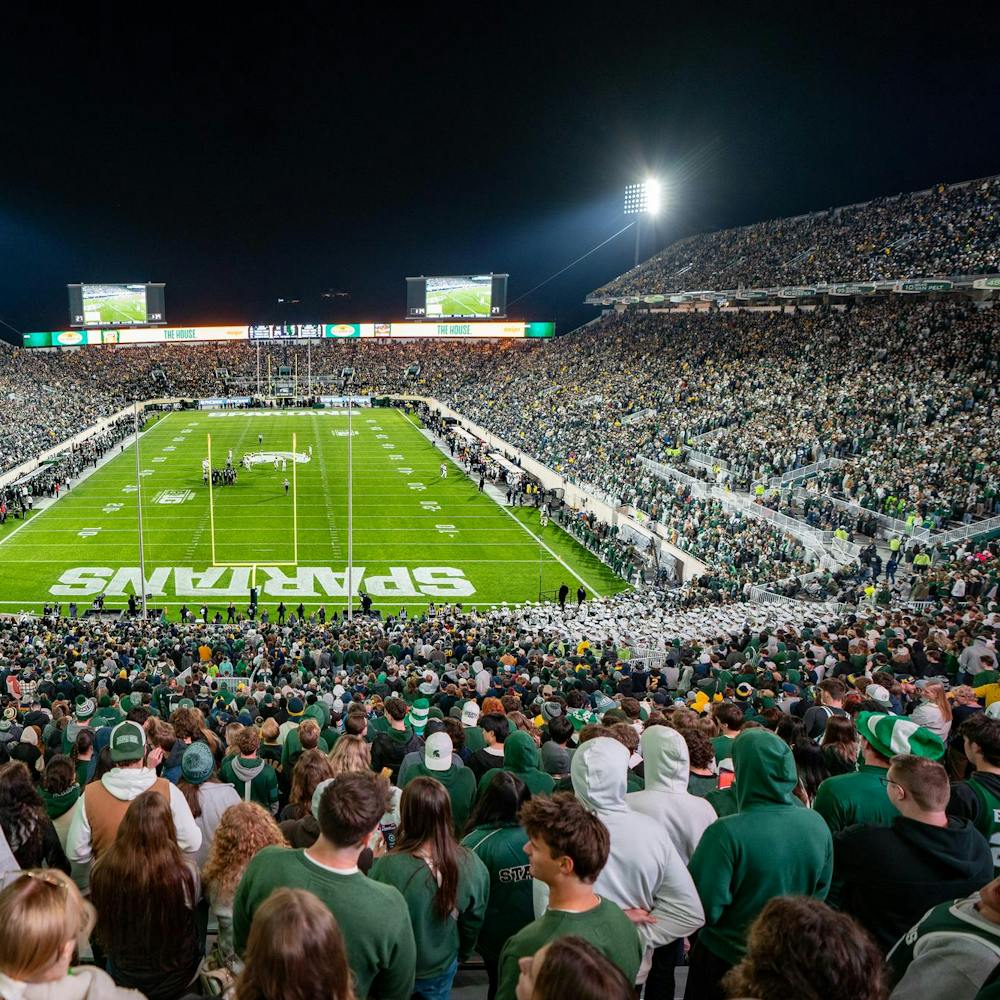As preliminary design continues on the forthcoming Facility for Rare Isotope Beams, or FRIB, a top government official toured many of MSU’s expansive research initiatives Thursday.
William Brinkman, the director of the U.S. Department of Energy’s, or DOE, Office of Science, praised the work of university researchers, students and officials for their commitment in recent years to advance the understanding of science at an academic level.
“Having (a number of facilities) has developed a lot of technology capabilities that has been made the basis (to) build something as big as FRIB,” Brinkman said.
“(MSU) has the capability to do this type of construction which is very unusual for universities.”
During the day, Brinkman visited the Cyclotron, MSU-DOE Plant Research Laboratory and the Energy and Automotive Research Laboratories. He gave a short address to officials and researchers in the Cyclotron’s atrium before noon.
The FRIB facility will train students, researchers and faculty in nuclear physics at a time when the nuclear industry — including sources of energy — is in a period of transition across the country, Brinkman said.
MSU surpassed the Massachusetts Institute of Technology for the top spot in nuclear physics graduate studies, according to nationwide rankings of graduate schools released in April 2010 by U.S. News & World Report.
J. Ian Gray, MSU’s vice president for research and graduate studies, said continued success in securing funding from the DOE results from a strong student base willing to take on academic challenges and researchers who can be competitive nationally.
“This is a research transformation which necessitates a change in culture,” he said. “While we’re still committed to an excellence in teaching — both at the undergraduate and graduate level — we have to show a tremendous commitment and excellence in scholarly activity, which includes research and creative activity.”
FRIB received critical decision approval Sept. 1, which establishes the design of the building to house the facility and the next phase’s cost of about $55 million, roughly a tenth of the overall cost of about $615 million. On Sept. 23, FRIB was issued a Finding of No Significant Impact status in relation to the environment.
The project is expected to reach early completion in 2018 with official completion slated for 2020. Civil construction of the building is expected to begin in 2013, said Thomas Glasmacher, FRIB project director for MSU.
MSU Provost Kim Wilcox said FRIB is a visible example of the relationship among a university, student and professor interacting with each other on numerous projects to advance the overall understanding of the world.
“(FRIB) puts us in a positive as being seen as a ‘shaper’ of the future,” Wilcox said. “Energy is going to be fundamental (to) how the future is characterized (and) this is important for us to be seen as one who shapes the future.”
Support student media!
Please consider donating to The State News and help fund the future of journalism.
Discussion
Share and discuss “Official tours MSU facilities” on social media.

